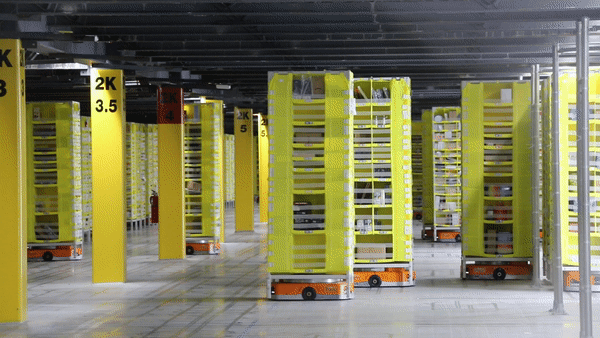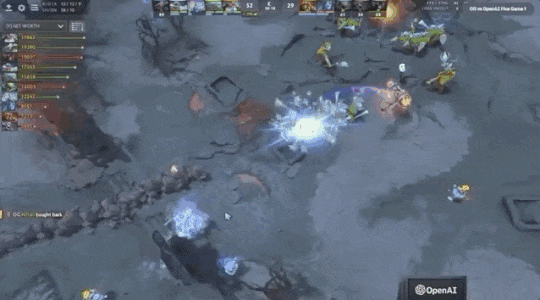

Why Tesla Bot & Amazon Astro shows you the future of interaction design is a...
source link: https://uxplanet.org/why-tesla-bot-amazon-astro-shows-you-the-future-of-interaction-design-is-already-here-1237f21e2c08
Go to the source link to view the article. You can view the picture content, updated content and better typesetting reading experience. If the link is broken, please click the button below to view the snapshot at that time.
Why Tesla Bot & Amazon Astro shows you the future of interaction design is already here
Now that the initial “hype” for Tesla’s AI showcase has settled, & smart home IOT lovers might have already picked up the new Amazon Astro for $999, I wanted to share my thoughts on the long-term implications of consumer robotics in our design world.
To many, Tesla’s AI day seems like a massive recruiting stunt, and the Amazon Astro just seems like an “overpriced Alexa on Wheels”.
However, I am sure we can all agree, the dancing Tesla Bot easily stole the show and gave us a glimpse of the future in true “Musk Fashion”.
The cuteness of Astro seen in this video below also makes everyone go “awww”.
Whatever your thoughts are, one thing is clear, consumer-facing robotics is coming.
In this article, I will share with you why as a designer you should be excited about the Tesla Bot or Amazon Astro, and how understanding robot-robot interaction has been shaping the future of UX and Interaction design.
Robot Rivalry
To really understand the impact robot-robot interaction already has on customers, products, and the world of design, we have to first visit who many consider as Tesla’s biggest rival, Amazon.
What started originally as some friendly Twitter banter between Musk and Bezoses, is now seemingly looking more like a full-fledged Pokémon red vs blue rivalry.
From recent events of Space X vs Blue origin to Amazon’s acquisition of self-driving technology, it is clear both companies will be fighting for the same slice of a cake in the future.
Why do we need to look at Amazon in relation to Tesla Bot?
For those unaware, long before Astro, Amazon has arguably been one of the largest employers worldwide of “robots”.


Did you know there are currently more than 100,000 of these robots working throughout Amazon’s global fulfillment centers?
These are not just any robotic assistants that help with an assembly line, these are fully automated robots that are foundational to Amazon’s success.
The secret of their success? All in the big theme of today’s article, designing for robot-robot interaction.
Robot-Robot Interaction Design
Here is a brief history lesson, after absorbing Kiva Systems, Amazon Robotics has not only patented its use of robot assistants in warehouses but evolved its efficiency greatly with the use of machine learning.
Since 2012, in every Amazon’s fulfillment center you can see robots are working together to wheel their inventory. This saves significant time in the fulfillment process. There are humans still. (not full Skynet yet)
However, humans working in this technology-rich environment are focusing on more “challenging” tasks, leaving all these robots to work together fully autonomously.
To improve this robot-robot interaction efficiency, Amazon Robotics designed and built the Intent Detection System, a deep-learning-based computer vision system trained on millions of video examples of stowing and other actions. In short and simple terms, these robots become more and more efficient at working with each other.
Machine learning and AI
Our theme of Machine learning and AI to improve robot-robot interaction continues as we look back to our protagonist for today, Tesla.
As the name AI day suggests for Tesla’s convention, Tesla has dived deep into AI a long time ago. Would you be surprised if I told you the area they focused o train the AI to improve on is once again robot-robot interaction, not robot-human interaction?
Take a look at OpenAI 5.


OpenAI 5 was created by Musk and took the gaming community by storm a few years ago. With just a few years of evolution and training, OpenAI 5 has become advanced enough to defeat 99.99% of the world’s top Esport plays in dota2.
Why is this such a significant step up from other AI’s such as Google’s Alpha go almost a decade ago?
Although Alpha Go is smart enough to outplay the world's best Go player, at a rather complex board game, Alpha go was still just an individual AI.
When compared to Go, Dota 2 first off is much more complex on multiple levels. It is a multiplayer 5v5 game in real-time meaning the rules of engagement are very different. The 5v5 nature also means 5 AI/robots would need to work together.
It takes years for any player to master the hundreds of individual heroes, items, and abilities in Dota 2. Players need to think and act on both a micro and macro level, using many skill-based items and abilities that do not automatically lock on. (Meaning just like using a gun or sword in real life, you need to aim and predict the other player’s behavior to land the hit.)
Now turn this difficulty up ten folds because, unlike Go, there are ten players, five on each team, meaning the 5 AI’s, would have to both work together to coordinate their own plans of attack while predicting the other 5 human players' behavior.
This is what gamers refer to as the “team fight” element. These team fights happen in the blink of an eye, with such diversity that there are endless possibilities happening every second. Some abilities requiring the team to delta split, some requiring the team to use fog of war to doge attacks, and some require the team to layer skills in a specific order. (All extremely complex and requires perfect communication)
Gamers like myself truly never believed that in just a few years 5 robots would be able to beat the world's best players, at one of the world's most complex video games.
This example should show you the capabilities of robots working together are limitless. Robots can work together to solve the most complex tasks people can imagine. The future isn’t to design one robot interacting with one human, it’s designing what the experience of multiple smart robots interacting together will behave like.
Still not convinced?
Take a look at one more final example, Boston dynamics Spot.
Other than funny parkour videos of robots and parody videos. Boston dynamics Spot is a perfect example of a consumer-facing design that focuses on robot-robot interaction.
Watch this awesome video below to learn more about how these spots can work together.
What this means to you, as an upcoming designer or student
Try to include these robot-robot interaction projects in your portfolio
Don’t be scared off if all this talk of machine learning, AI, and robots working together sounds too futuristic for you. I promise widespread consumer use is right around the corner. Soon like designing for mobile, desktop, wearables, or VR, designing robot interactions will be a huge new Wild West for UX designers to explore.
If you don't want to go to speculative, you can also get a taste of designing for robot-robot interaction today.
Similar to how current designers tackle IOT designs, such as linking home security and other products together, when consumer-focused robot assistants flood into our market, I believe understanding the core interaction for robot-robot interaction design will be very similar to the patterns of these IOT systems.


Amazon Astro is the best proof of this. Now that Amazon owns Ring and many other home IOT programs, just like Alexa linking these devices together can be a first step for you to design a more complex network of robot-robot interactions. Start thinking about how you can leverage each of these technologies in the system as touchpoints to create a better user experience together.
An easy-to-understand example would be if you created a case study app where your GPS location is shared from your phone, so maybe every time you get close to your home, Astro rolls up to help pick up some groceries bags from you.
Just remember, Amazon and Tesla are not just having the new “space race” for fun. They understand the importance of interaction design for robots. The question is are you as a designer ready for it?
Thanks for reading!
My name is Leon and I’m always happy to chat! Feel free to connect with me on LinkedIn or join our ever-growing design discord.
If you are looking for job opportunities, mentorship, or career advice, we have an active community with hundreds of verified interns, mentors, and professionals from big techs like Amazon, Google, Facebook, Apple, etc. We also highly encourage students to join! In our discord, students come from all sorts of majors across American campuses. (Yes, we also have lots of amazing Bootcamp grads) Everyone is welcome.
So if you want to learn more about design and use some of our resources, feel free to join here!
Recommend
About Joyk
Aggregate valuable and interesting links.
Joyk means Joy of geeK